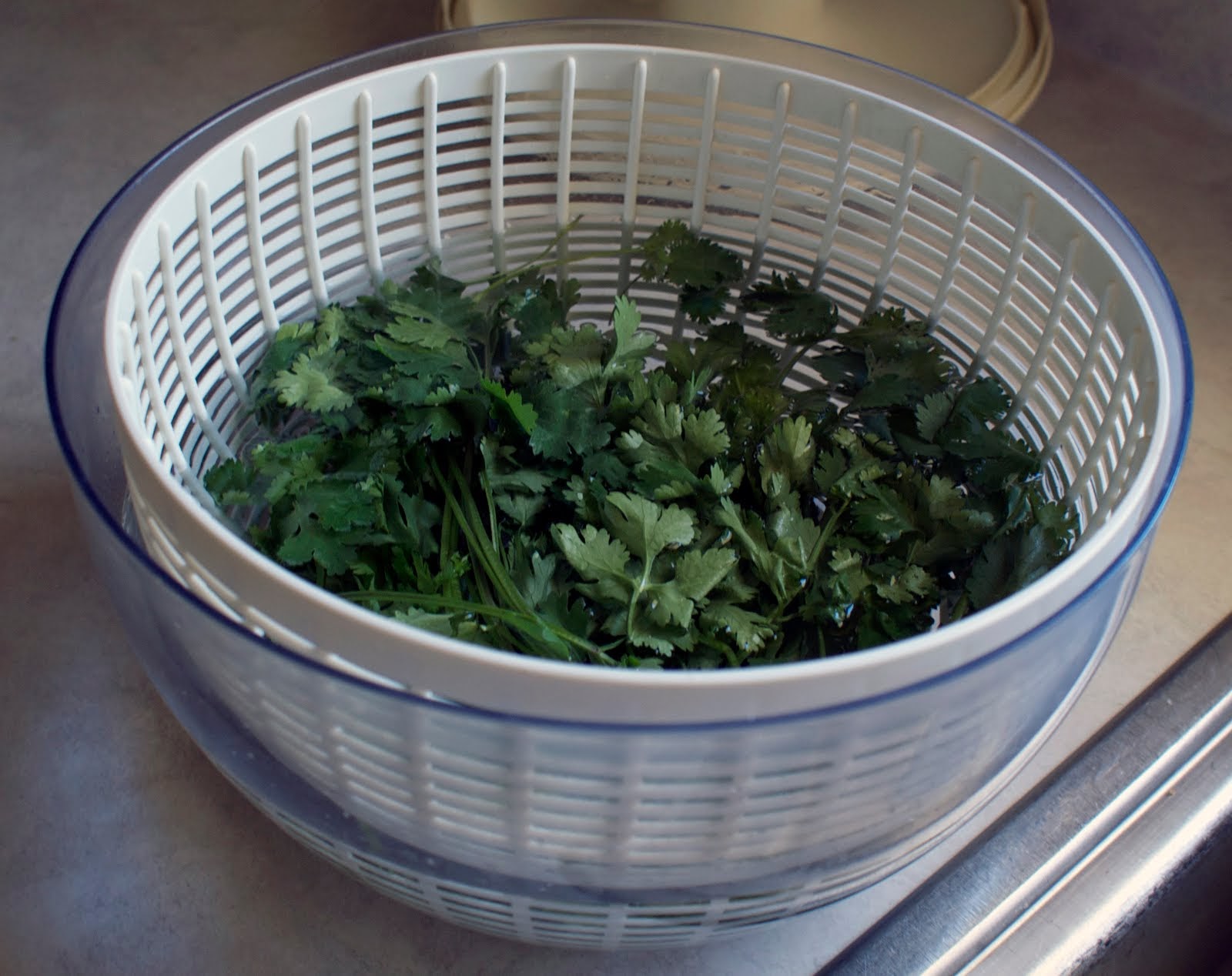

Articles
How To Store Cilantro Leaves
Modified: December 7, 2023
Learn the best techniques for storing cilantro leaves with our informative articles. Keep your cilantro fresh and flavorful with these expert tips.
(Many of the links in this article redirect to a specific reviewed product. Your purchase of these products through affiliate links helps to generate commission for Storables.com, at no extra cost. Learn more)
Introduction
Welcome to our guide on how to store cilantro leaves! Whether you’re a culinary enthusiast or just someone who enjoys adding a vibrant touch to your dishes, cilantro is a versatile herb that can elevate the flavor profiles of various cuisines. However, cilantro leaves have a relatively short shelf life, making it essential to store them properly to maintain their freshness and flavor for as long as possible.
In this article, we will explore the importance of storing cilantro leaves correctly and share some best practices to help you extend their lifespan. We will also walk you through three different methods for storing cilantro leaves, including refrigerator storage, freezing, and preserving them in oil. Additionally, we’ll provide some tips on using stored cilantro effectively.
So, if you’re ready to learn how to keep your cilantro leaves vibrant and full of flavor, let’s dive right in!
Key Takeaways:
- Properly storing cilantro leaves is crucial for preserving their vibrant flavor, extending their shelf life, and reducing food waste. Follow best practices and methods like refrigeration, freezing, and oil preservation to enjoy fresh cilantro year-round.
- Make the most of your stored cilantro by adjusting seasoning, experimenting with infused oils, and exploring diverse cuisines. With proper storage and creative usage, you can elevate your dishes with the unique taste and aroma of cilantro, enhancing your culinary adventures.
Read more: How To Store Cilantro
Why is proper storage of cilantro leaves important?
Proper storage of cilantro leaves is crucial to maintain their freshness, flavor, and nutritional value. Cilantro leaves are delicate, and if not stored correctly, they can wilt, lose their vibrant green color, and become less aromatic. Here are a few reasons why it’s important to store cilantro leaves properly:
- Preserving flavor: Cilantro leaves have a unique and vibrant flavor that adds a refreshing touch to many dishes. By storing them correctly, you can retain their distinct taste and aroma, enhancing the overall culinary experience.
- Extending shelf life: Cilantro leaves have a relatively short lifespan, typically lasting only a few days to a week. Proper storage can help prolong their freshness, allowing you to enjoy them for a more extended period.
- Maintaining nutritional value: Cilantro is not only flavorful but also packed with essential nutrients like vitamin A, vitamin C, and antioxidants. Storing cilantro correctly can help preserve these nutrients, ensuring that you reap the maximum health benefits.
- Reducing food waste: By storing cilantro properly, you can minimize food waste. When cilantro leaves spoil prematurely, they often end up in the trash. However, with proper storage techniques, you can minimize waste and get the most out of your ingredients.
Now that we understand the importance of proper cilantro storage, let’s explore some best practices to help you keep your cilantro leaves fresh and flavorful for longer.
Best practices for storing cilantro leaves
When it comes to storing cilantro leaves, these best practices will help you maintain their freshness and flavor for an extended period:
- Start with fresh cilantro: The key to preserving cilantro leaves is to begin with fresh, high-quality bunches. Look for cilantro with vibrant green leaves and avoid any wilting or yellowing.
- Trim the stems: Before storing cilantro, trim the ends of the stems. Cutting them will allow the cilantro to absorb water more effectively, keeping the leaves hydrated and crisp.
- Remove any damaged leaves: Inspect the cilantro bunch and remove any leaves that are bruised, yellowed, or slimy. Damaged leaves can speed up the spoilage process, so it’s essential to eliminate them before storage.
- Rinse and dry the leaves: Gently wash the cilantro leaves under cold water to remove any dirt or debris. After rinsing, pat them dry using a kitchen towel or a salad spinner. Excess moisture can cause the leaves to wilt quickly, so ensure they are thoroughly dry before storing.
- Store in airtight containers: Place the cilantro leaves in an airtight container, such as a plastic bag or a glass jar with a tight-fitting lid. This will help preserve the freshness by preventing moisture loss and exposure to air.
- Refrigerate at the right temperature: Cilantro leaves should be stored in the refrigerator, ideally in the crisper drawer. Set the temperature to around 40°F (4°C) to maintain optimal freshness. Avoid storing cilantro near strong-smelling foods, as it can absorb their odors.
- Change the water (for the stem storage method): If you choose to store cilantro with the stems in a glass of water, change the water every few days. Fresh water will help keep the cilantro hydrated and prolong its shelf life.
By following these best practices, you can ensure that your cilantro leaves stay fresh, vibrant, and ready to enhance your culinary creations. Now, let’s explore three popular methods for storing cilantro leaves: refrigerator storage, freezing, and preserving in oil.
Method 1: Refrigerator storage
Refrigerator storage is the most common and convenient method for extending the shelf life of cilantro leaves. Here’s how you can store cilantro in the refrigerator:
- Prepare the cilantro: Start by trimming the ends of the cilantro stems and removing any damaged leaves. Rinse the cilantro gently under cold water and pat dry.
- Wrap in a paper towel: Take a paper towel and dampen it slightly. Place the cilantro leaves on the towel, then wrap them loosely. The damp paper towel will help maintain moisture and prevent the leaves from drying out.
- Store in a resealable bag: Put the wrapped cilantro inside a resealable plastic bag or an airtight container. Seal the bag, making sure to remove as much air as possible.
- Place in the refrigerator: Store the bag of cilantro in the refrigerator’s crisper drawer or a section where it won’t get crushed. Avoid placing heavy items on top of the bag, as this can bruise the leaves.
- Check and refresh: Every few days, check the cilantro for any signs of wilting or drying. If the paper towel becomes damp, replace it with a fresh one to prevent excess moisture.
- Use within 1-2 weeks: When stored properly, cilantro leaves can stay fresh in the refrigerator for about 1-2 weeks. However, it’s best to use them as soon as possible for the best flavor and quality.
Refrigerator storage is a simple and effective way to keep your cilantro leaves fresh and ready to use. However, if you have a large quantity of cilantro or want to store it for a more extended period, freezing is an excellent option. Let’s explore freezing cilantro as our next method of storage.
Store cilantro leaves by wrapping them in a slightly damp paper towel and placing them in a resealable plastic bag. Keep them in the refrigerator and change the paper towel every few days to maintain freshness.
Method 2: Freezing cilantro leaves
If you have a surplus of cilantro or want to store it for an extended period, freezing is a great option. Freezing cilantro leaves can help retain their flavor and aroma for months. Follow these steps to freeze cilantro:
- Prepare the cilantro: Start by rinsing the cilantro leaves under cold water and pat them dry with a kitchen towel.
- Remove the leaves from the stems: Gently separate the leaves from the stems. While the stems are edible, they can become tough when frozen, so it’s best to remove them for this method.
- Flash freeze the leaves: Lay the cilantro leaves in a single layer on a baking sheet lined with parchment paper. Make sure they are not touching each other. Place the baking sheet in the freezer and let the cilantro leaves freeze for a couple of hours.
- Transfer to a freezer-safe container: Once the cilantro leaves are frozen, transfer them into a freezer-safe container or a zip-top bag. Squeeze out as much air as possible before sealing.
- Label and date: Don’t forget to label the container or bag with the date of freezing. This will help you keep track of its freshness.
- Store in the freezer: Put the sealed container or bag of cilantro leaves in the freezer, where they can be stored for up to six months.
- Thaw and use as needed: When you’re ready to use the frozen cilantro, simply remove the desired amount from the container or bag and thaw it in the refrigerator for a few hours or overnight. Avoid refreezing thawed cilantro.
Freezing cilantro leaves is a fantastic way to preserve their vibrant flavor and aroma. Whether you’re making soups, sauces, or other cooked recipes, having frozen cilantro on hand can add a burst of freshness to your dishes. However, if you prefer a different method for storing cilantro, consider preserving them in oil, which we will explore next.
Read more: How To Store Cilantro In Fridge
Method 3: Preserving cilantro leaves in oil
Preserving cilantro leaves in oil is a great way to keep their vibrant flavor intact while adding a touch of richness. Here’s how you can preserve cilantro in oil:
- Prepare the cilantro: Start by rinsing the cilantro leaves under cold water and pat them dry.
- Blanch the cilantro: Blanching the cilantro in boiling water for a brief period helps retain its vibrant green color. Bring a small pot of water to a boil and immerse the cilantro leaves for about 10 seconds. Remove them quickly and transfer to a bowl of ice water to cool and stop the cooking process.
- Remove excess moisture: Once the cilantro leaves are cool, gently pat them dry using a kitchen towel or paper towels. It’s important to remove excess moisture to prevent the growth of bacteria in the oil.
- Chop or leave whole: Decide whether you want to preserve the cilantro leaves whole or chop them into smaller pieces. This choice is based on personal preference and the intended use of the preserved cilantro.
- Place in a container: Carefully pack the cilantro leaves into a clean, sterilized jar or airtight container. Ensure that the container is completely dry to prevent any moisture from contaminating the oil.
- Add oil: Pour enough oil into the container to completely cover the cilantro leaves. Use a neutral-flavored oil like olive oil or vegetable oil. Make sure that the cilantro is completely submerged in the oil.
- Seal and store: Seal the container tightly and store it in the refrigerator. Preserved cilantro in oil can stay fresh for up to a month, but it’s advisable to use it within a couple of weeks to maintain its flavor and quality.
- Use as needed: When you want to use the preserved cilantro, scoop out the desired amount, allowing the excess oil to drip off. You can use it in dressings, marinades, sautés, or as a finishing touch on various dishes.
Preserving cilantro leaves in oil not only extends their shelf life but also infuses the oil with a delightful cilantro flavor. This method can add a unique touch to your cooking and is particularly useful in recipes that call for both cilantro and oil. Now that you have learned various methods for storing cilantro, let’s move on to some useful tips for using the stored cilantro effectively.
Tips for using stored cilantro leaves
Using stored cilantro leaves can be a convenient and flavorful addition to your dishes. Here are some tips to help you make the most of your stored cilantro:
- Adjust seasoning: When using frozen cilantro, remember that its texture may change after thawing. Adjust the seasoning of your recipes accordingly to ensure a well-balanced flavor.
- Use in cooked dishes: Frozen or preserved cilantro leaves work well in cooked dishes like soups, stews, stir-fries, and sauces. Add them towards the end of the cooking process to preserve their freshness and aroma.
- Garnish with fresh cilantro: While stored cilantro is a great option for cooking, there’s nothing quite like the flavor and fragrance of freshly chopped cilantro. Consider adding a fresh cilantro garnish to your finished dishes for that extra pop of color and freshness.
- Experiment with infused oils: When preserving cilantro leaves in oil, try experimenting with different infused oils to add additional flavor elements. For example, you can infuse the oil with garlic, chili, or lime for a unique twist.
- Label and date your storage containers: Properly labeling and dating your storage containers will help you keep track of their freshness. This way, you can prioritize using the older cilantro first before moving on to the newer batches.
- Try cilantro paste or pesto: If you have a surplus of fresh cilantro, consider making a cilantro paste or pesto that can be portioned and frozen. Cilantro paste and pesto can be versatile additions to various recipes like marinades, dressings, and spreads.
- Experiment with different cuisines: Cilantro is a staple in many cuisines, including Mexican, Thai, Indian, and Vietnamese. Use your stored cilantro to explore different dishes from these culinary traditions and expand your flavor palette.
Remember, the methods and tips discussed here are guidelines, and you can always adjust them to suit your preferences and storage capabilities. With proper storage and creative usage, you can enjoy the vibrant flavors of cilantro all year round!
Hope you find these tips helpful in making the most of your stored cilantro. Enjoy your culinary adventures!
Conclusion
Properly storing cilantro leaves is essential for preserving their freshness, flavor, and nutritional value. Whether you choose to store them in the refrigerator, freeze them, or preserve them in oil, following the recommended methods will help extend their shelf life and enhance your culinary experience.
By starting with fresh cilantro, trimming the stems, and removing any damaged leaves, you can ensure that your cilantro is in optimal condition. Storing cilantro in the refrigerator with a damp paper towel or freezing it after blanching and flash freezing are effective methods for prolonging its lifespan. Additionally, preserving cilantro in oil adds a rich and flavorful touch to your dishes.
When using stored cilantro, remember to adjust the seasoning in your recipes if using frozen cilantro and consider adding a fresh cilantro garnish for that extra burst of flavor. Experiment with infused oils, try making cilantro paste or pesto, and explore various cuisines that incorporate cilantro as a key ingredient.
Ultimately, the key is to make the most of your stored cilantro and enjoy its vibrant flavors in your cooking. With these storage methods and tips, you can extend the shelf life of cilantro leaves and elevate your dishes with their unique taste and aroma.
So, whether you’re preparing a delicious Mexican salsa, a fragrant Thai curry, or a refreshing Indian chutney, you can now store your cilantro leaves properly and have them ready whenever your culinary adventures call for that fresh and vibrant touch.
Happy cooking!
Frequently Asked Questions about How To Store Cilantro Leaves
Was this page helpful?
At Storables.com, we guarantee accurate and reliable information. Our content, validated by Expert Board Contributors, is crafted following stringent Editorial Policies. We're committed to providing you with well-researched, expert-backed insights for all your informational needs.
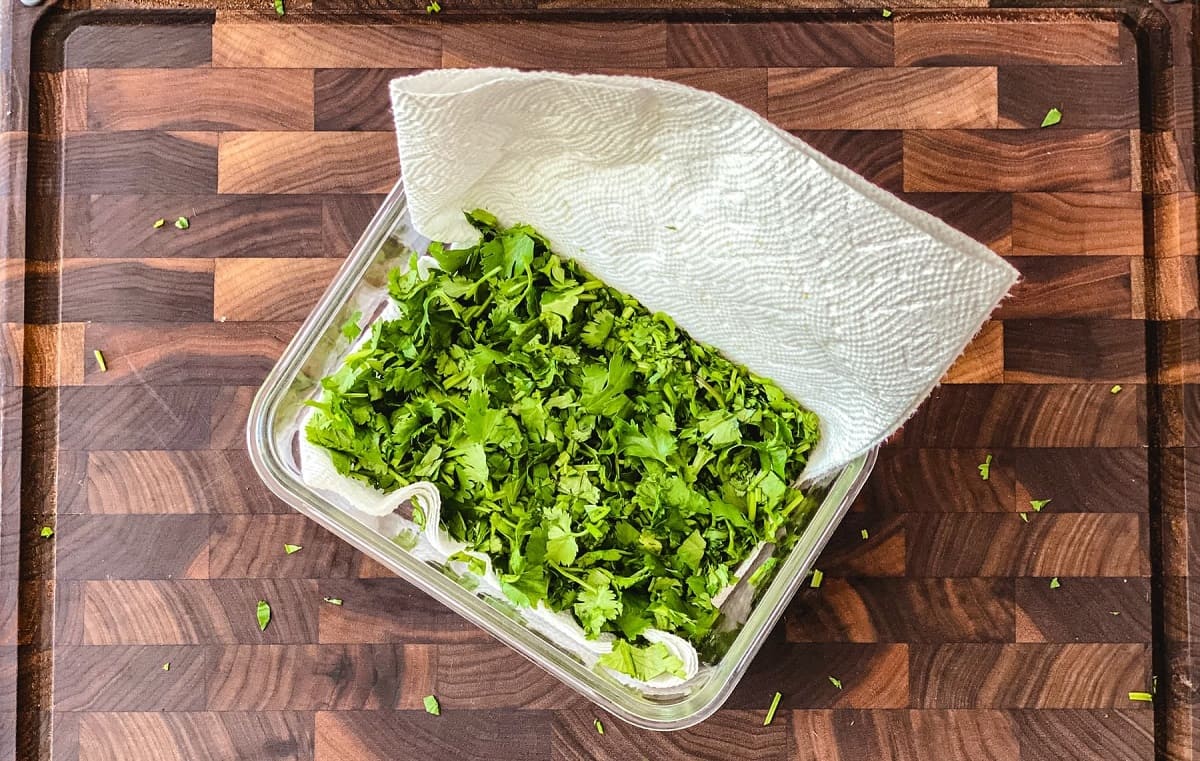
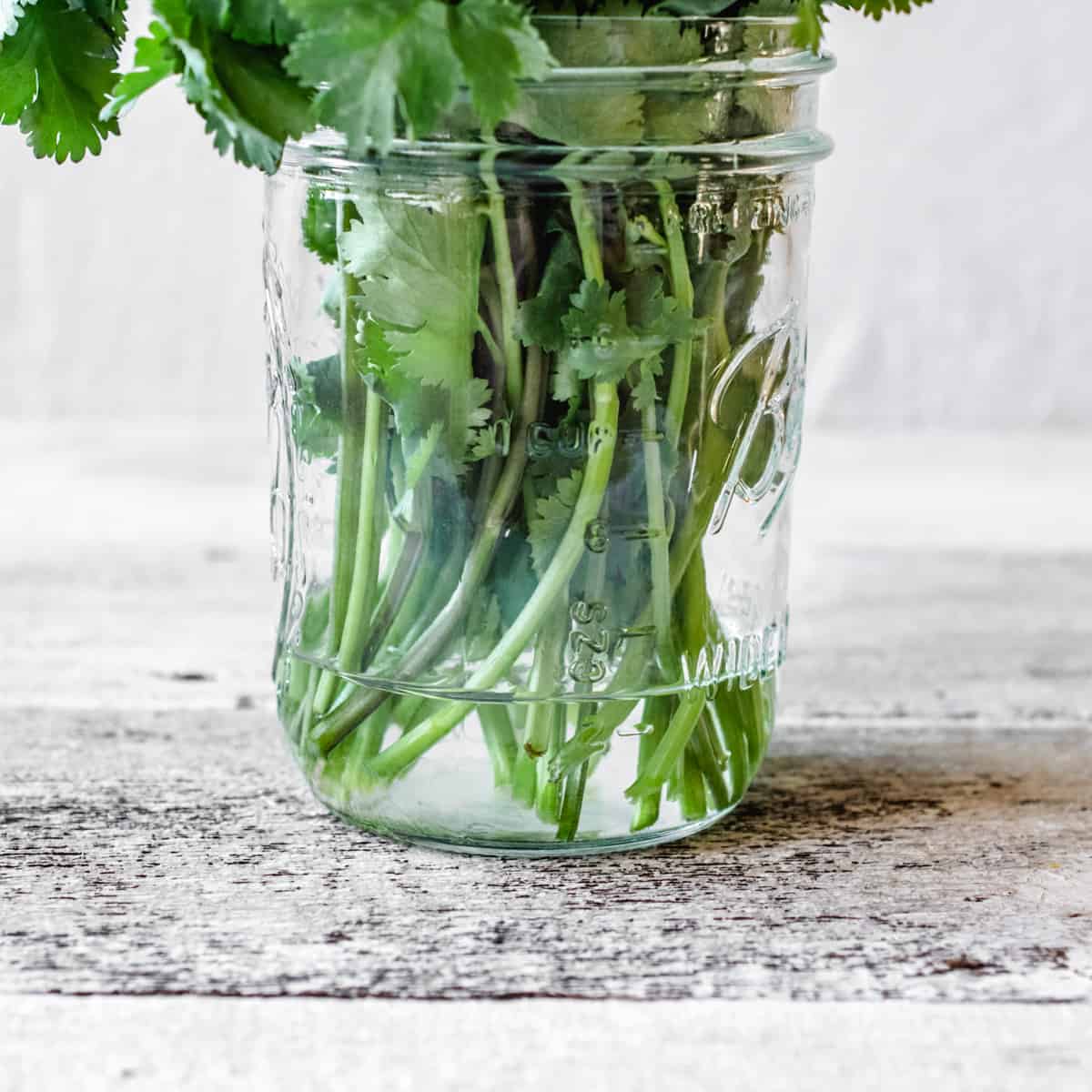
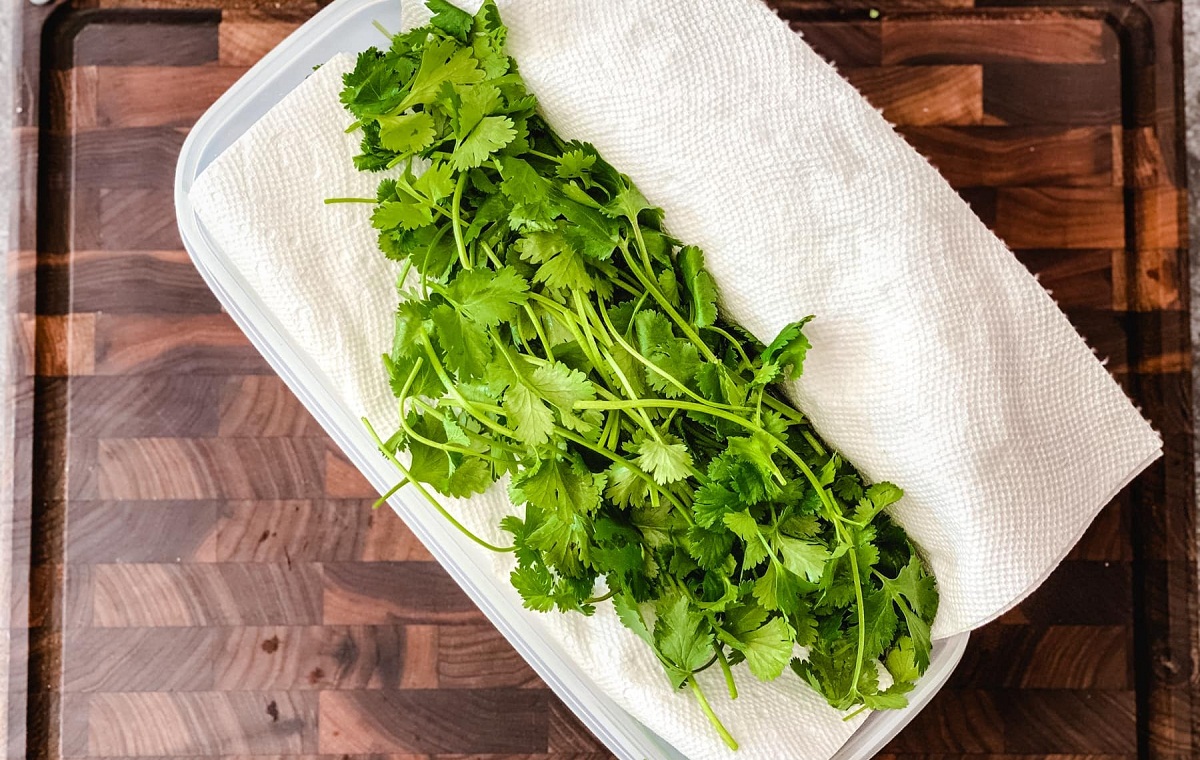
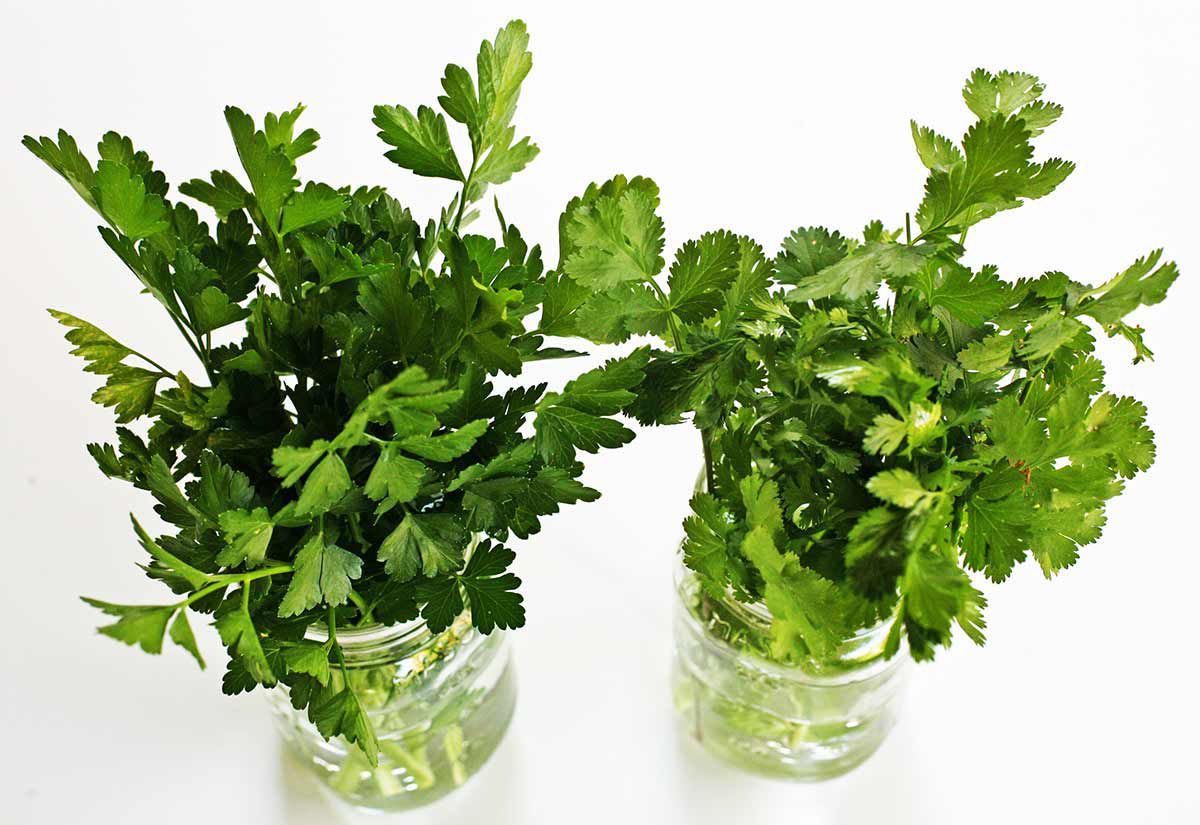

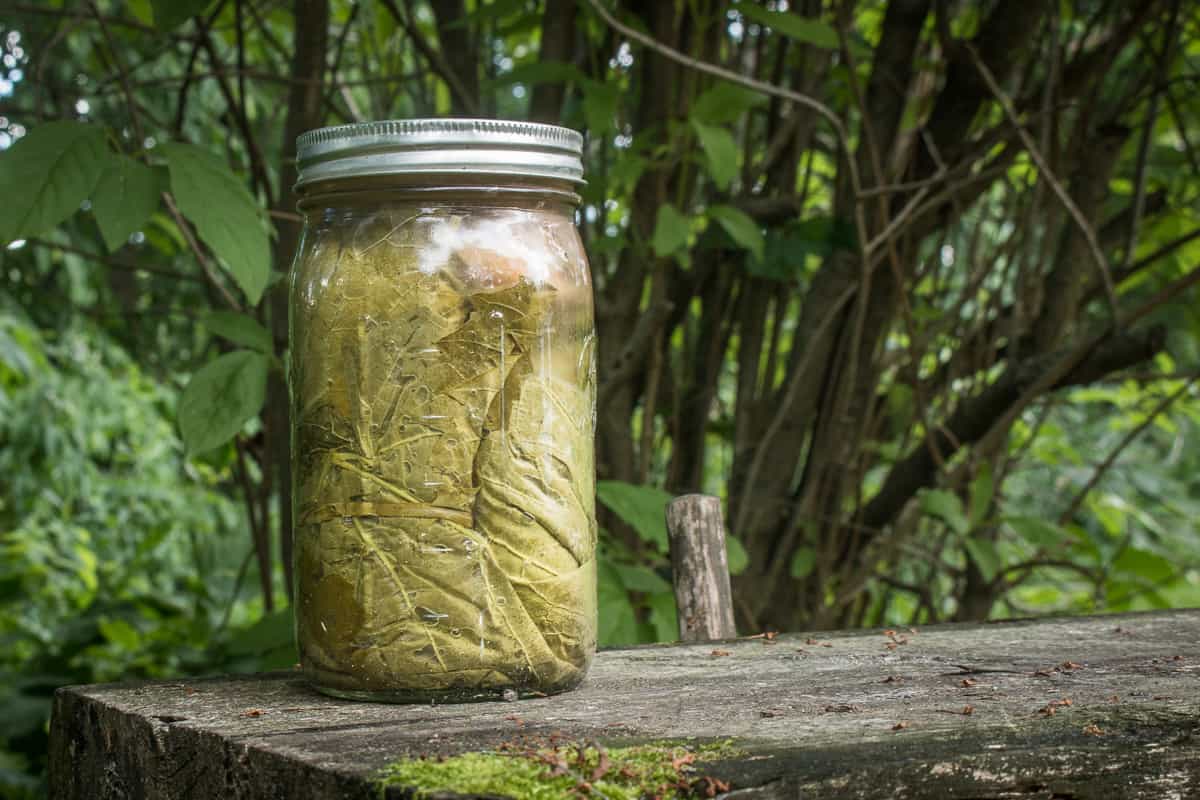
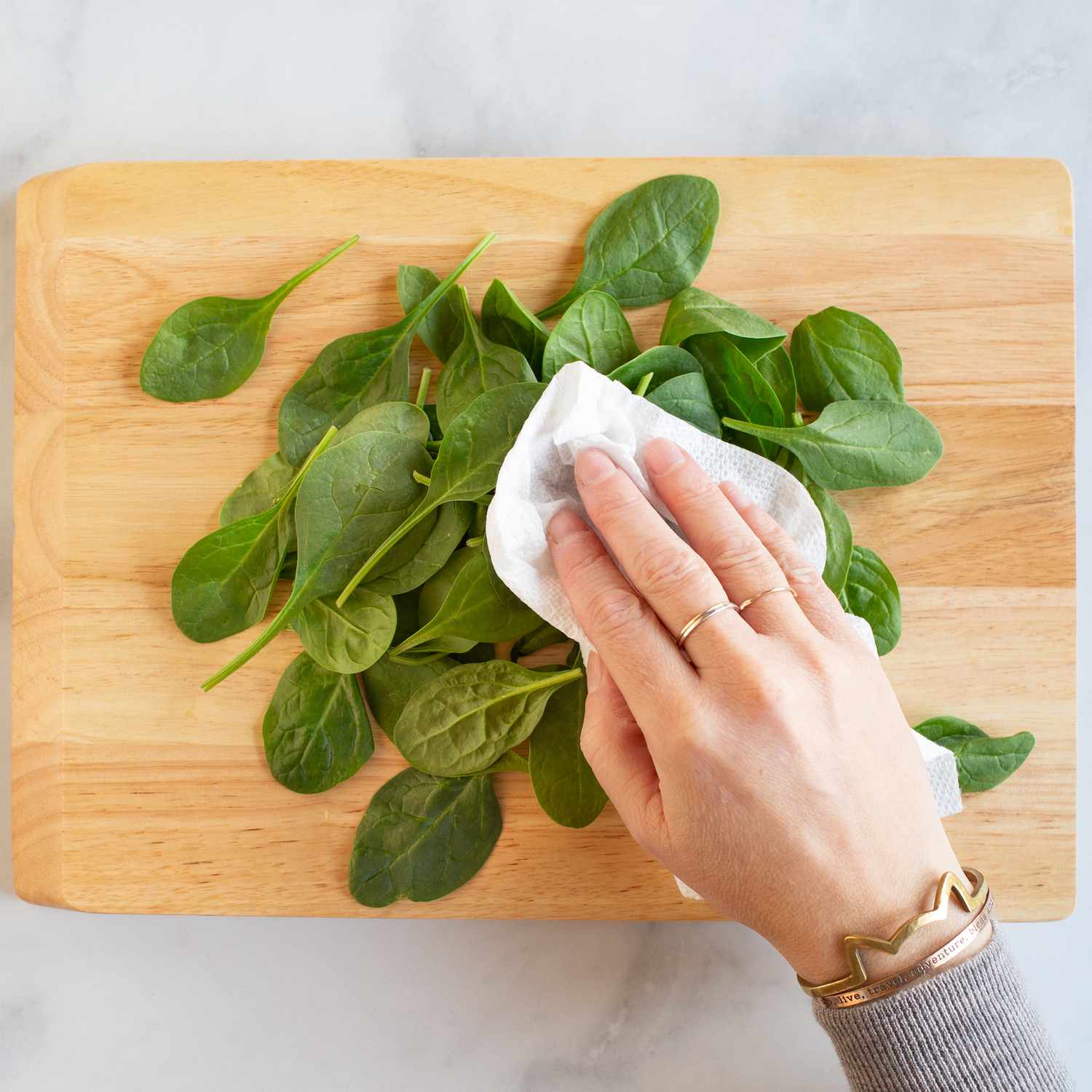
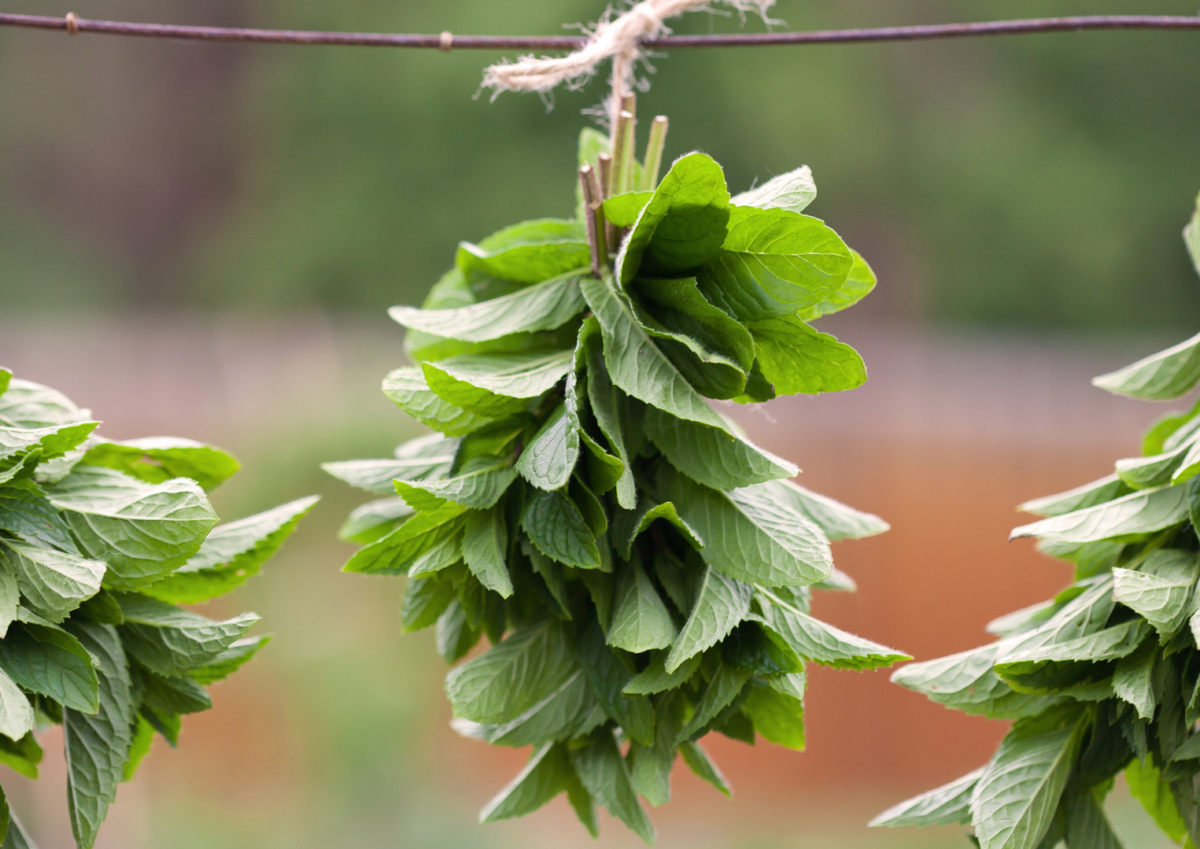
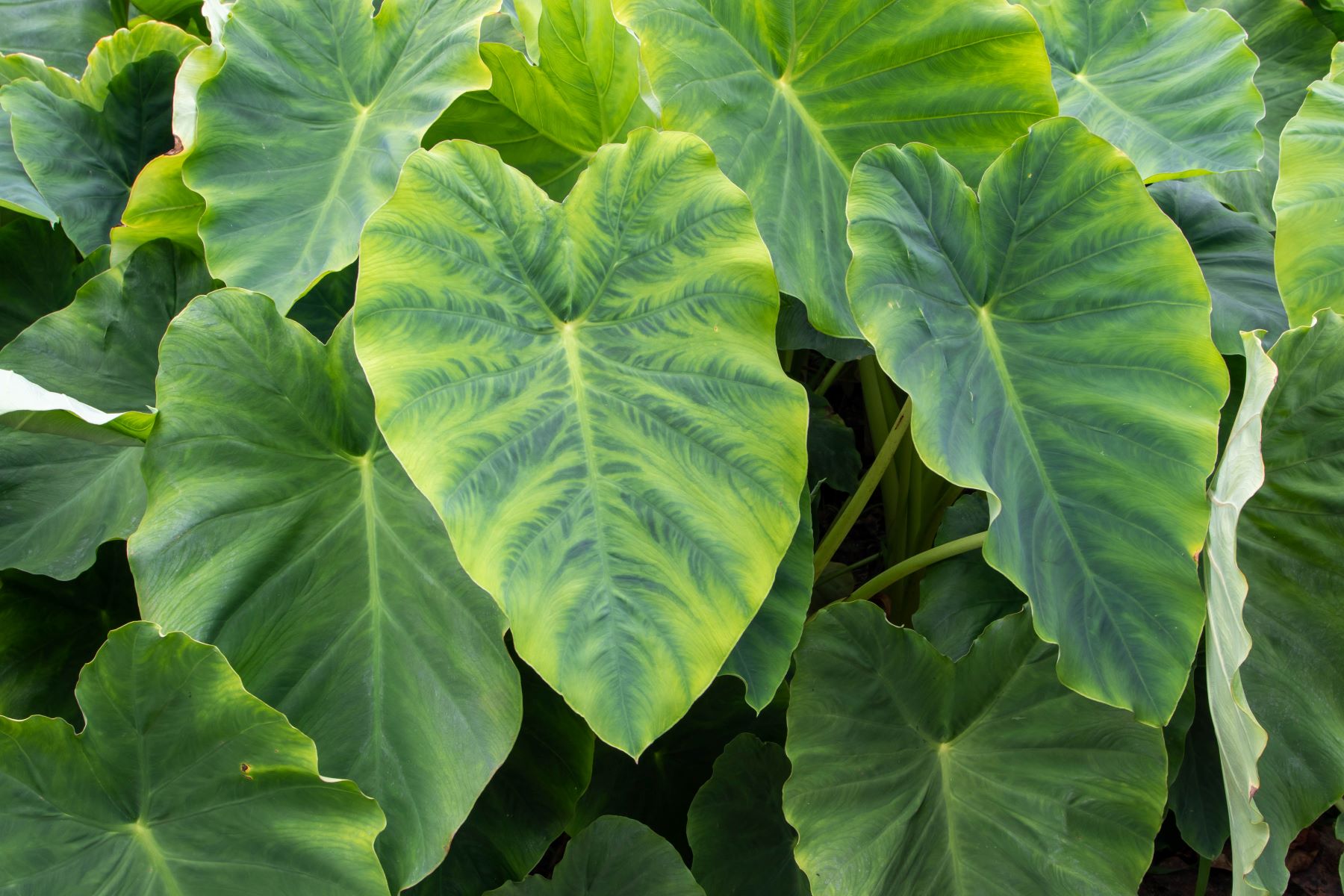
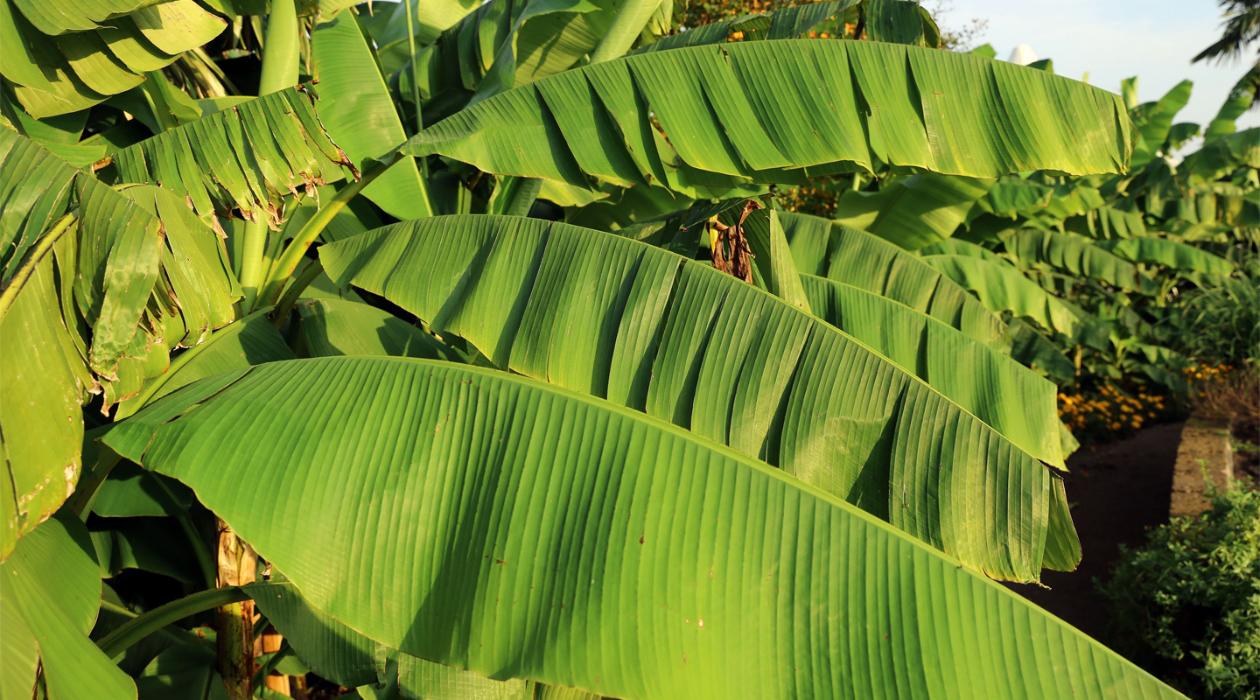
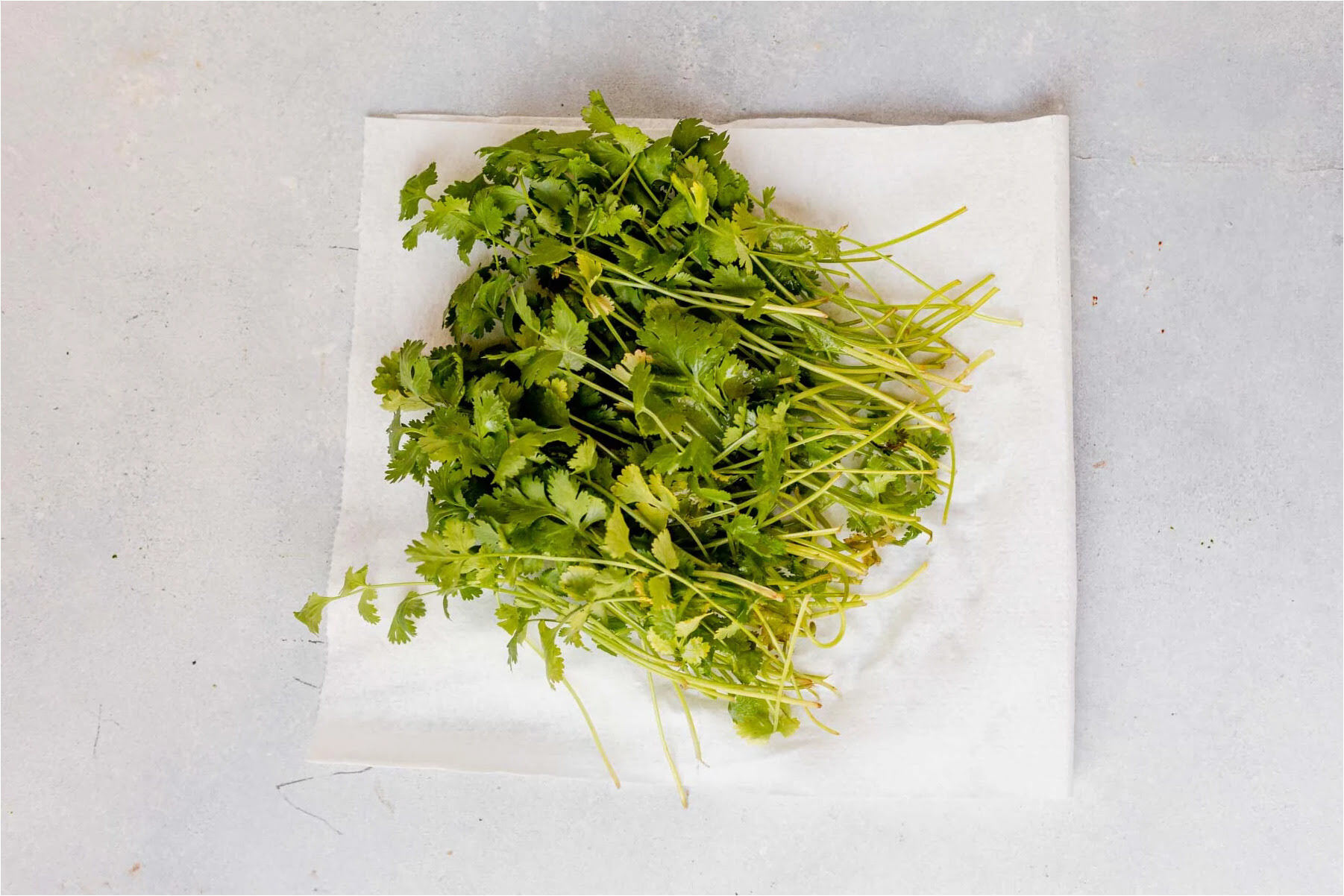
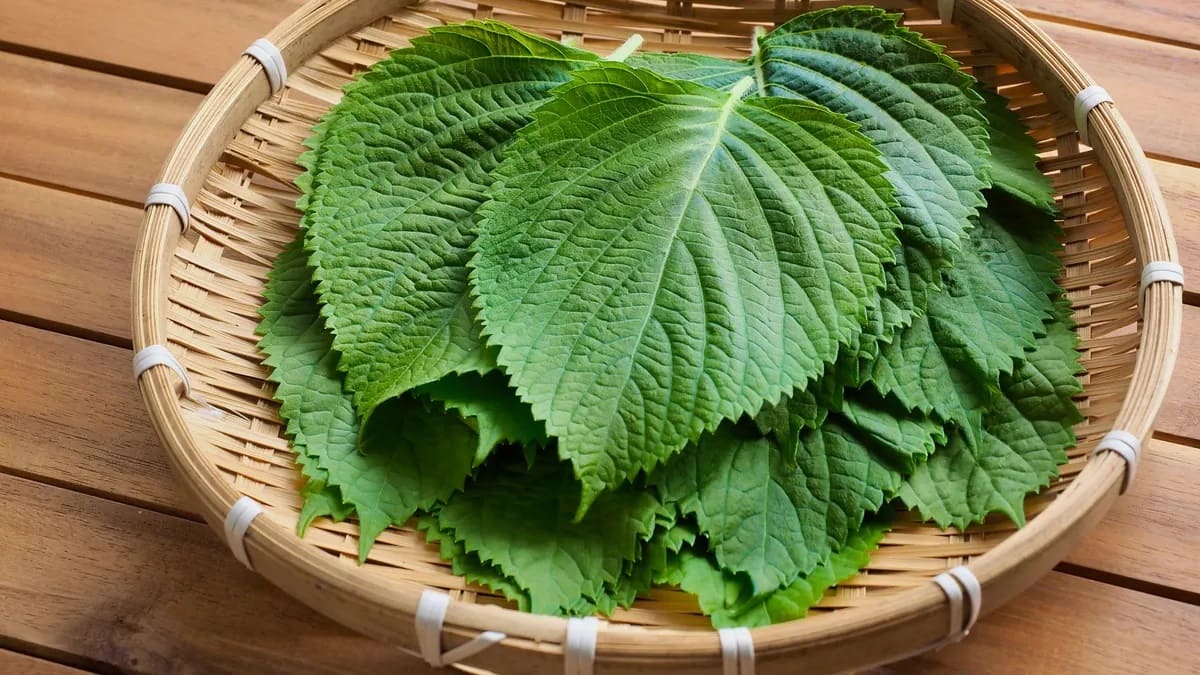
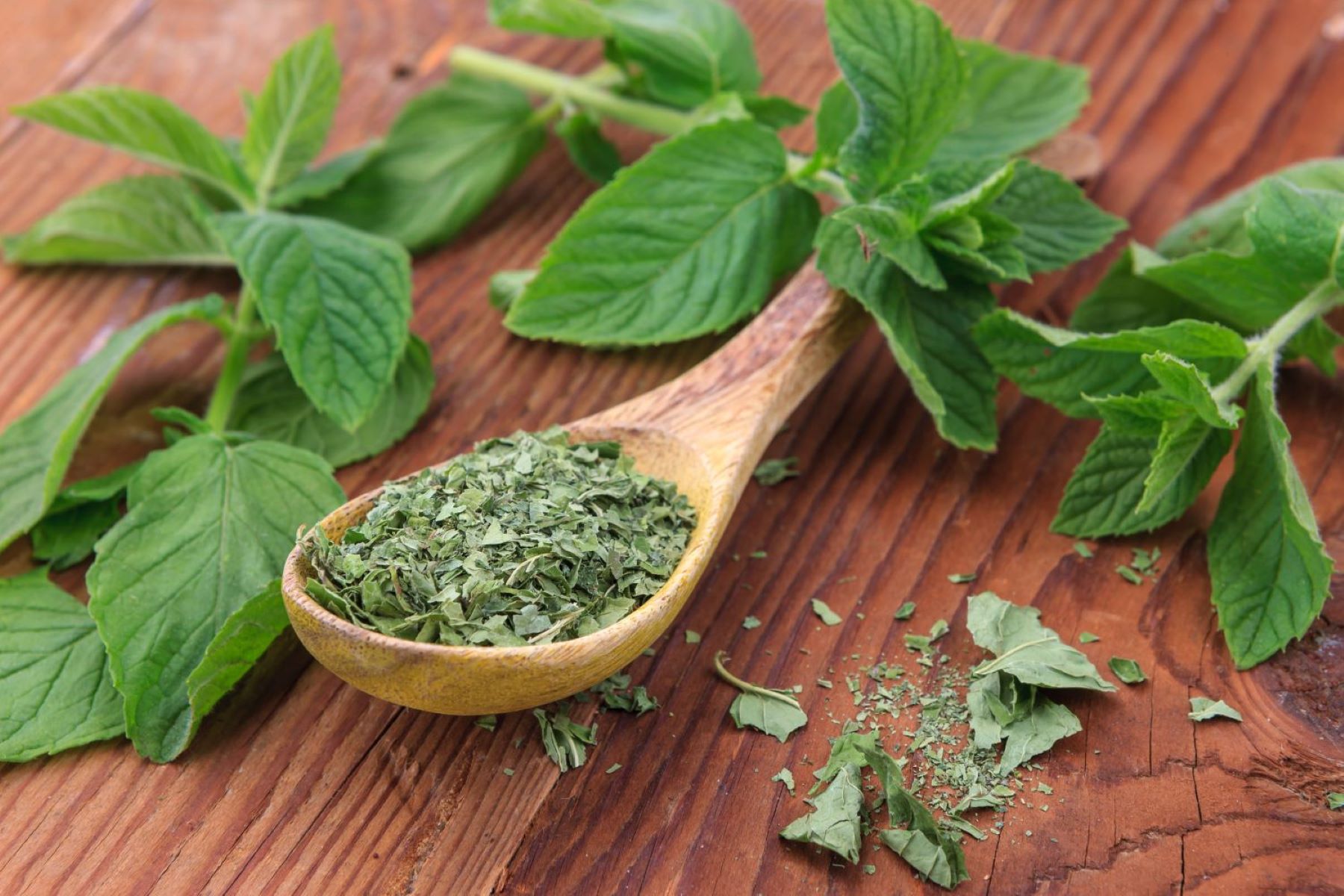
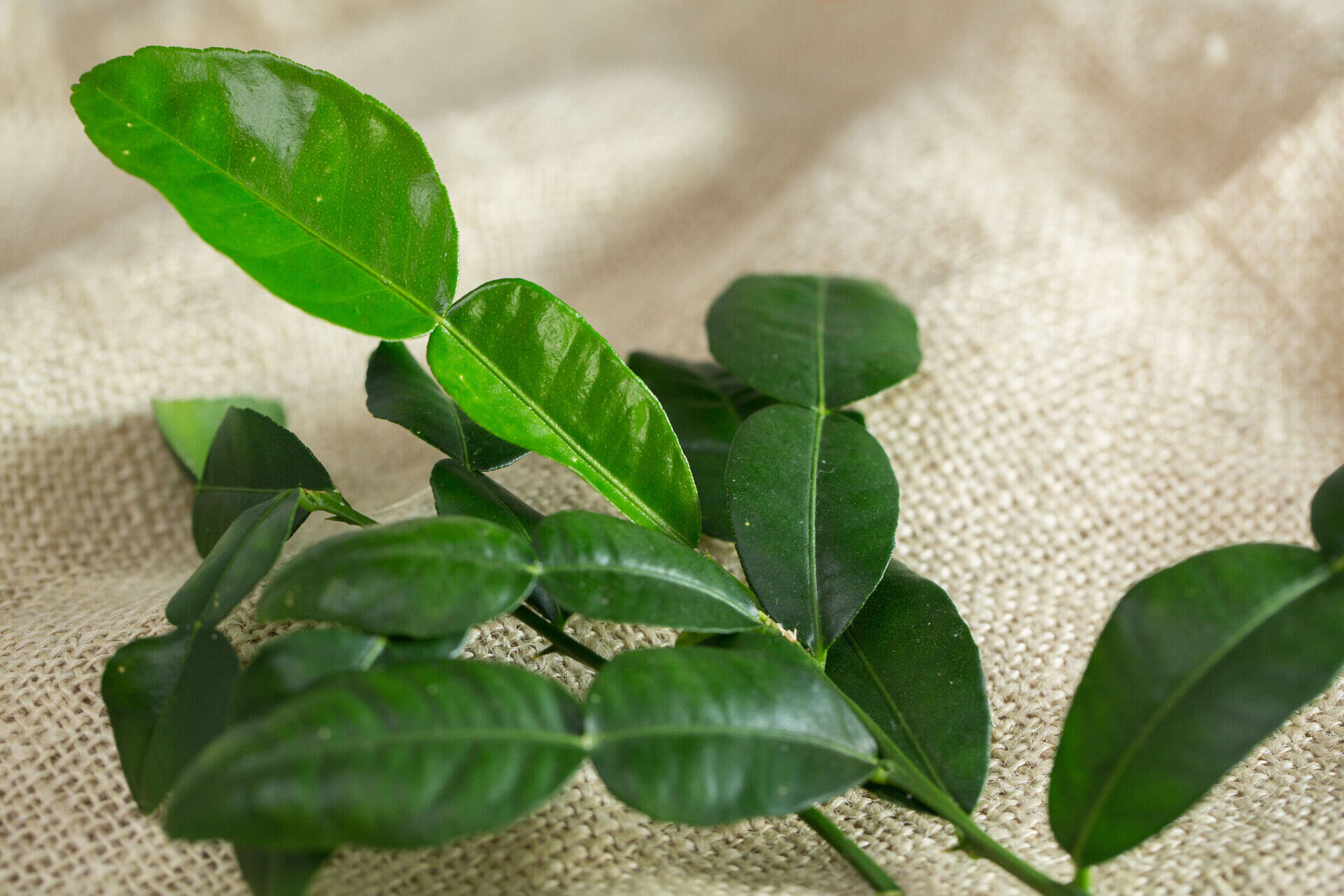

0 thoughts on “How To Store Cilantro Leaves”